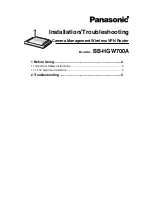
1. Connect the battery to the battery snap.
2. Set the voltmeter to read 20VDC and connect the
COM lead to the negative (–) side of the battery
and the V lead to pin 3 of IC U1 as shown in
Figure 7.
3. Push switch SW1 until the voltmeter indicates
9-10VDC.
4. Move the V lead of the voltmeter to pin 2. The
voltmeter should indicate 0V. Push SW1 again.
The voltmeter should indicate 8-9VDC.
In the same manner, test the outputs of the
counter (pins 4, 7, 10, 1, 5, and 6).
If the test results are not satisfactory, then:
a) Check U1.
Be sure that it is installed as
shown in the assembly instructions.
Remove the battery from the battery snap and
the leads from the tester.
SECTION C - STEP PULSES WITH COUNTER
In this section, a 4017 counter IC and a 40106
inverter IC are used to control eight electronic
switches. A short positive pulse must be generated
and applied to the clock input of the 4017 IC
whenever switch SW1 is depressed. This is done by
wiring three inverters in series. When switch SW1 is
depressed, the voltage at pin 1 of the 40106 is
pulled to ground. This low condition is then inverted
three times to produce a positive pulse to the CLK
pin of the 4017.
The 4017 IC is a five-stage Johnson decade
counter. The IC has 10 outputs, but only one output
will be driven high at any given time, the other nine
will be low. For each pulse at the clock (CLK) input,
the output will move one position. In this design,
only eight outputs are used, the ninth output is wired
to the reset (RST) pin. When the reset pin goes
high, it sets the Q0 output high again. The clock
enable (ENA) pin is tied to ground, so every clock
pulse will move the output.
TESTING
Figure 6
-11-
To Switches
}
1
16
VDC
9V
+
V
COM
Figure 7













































